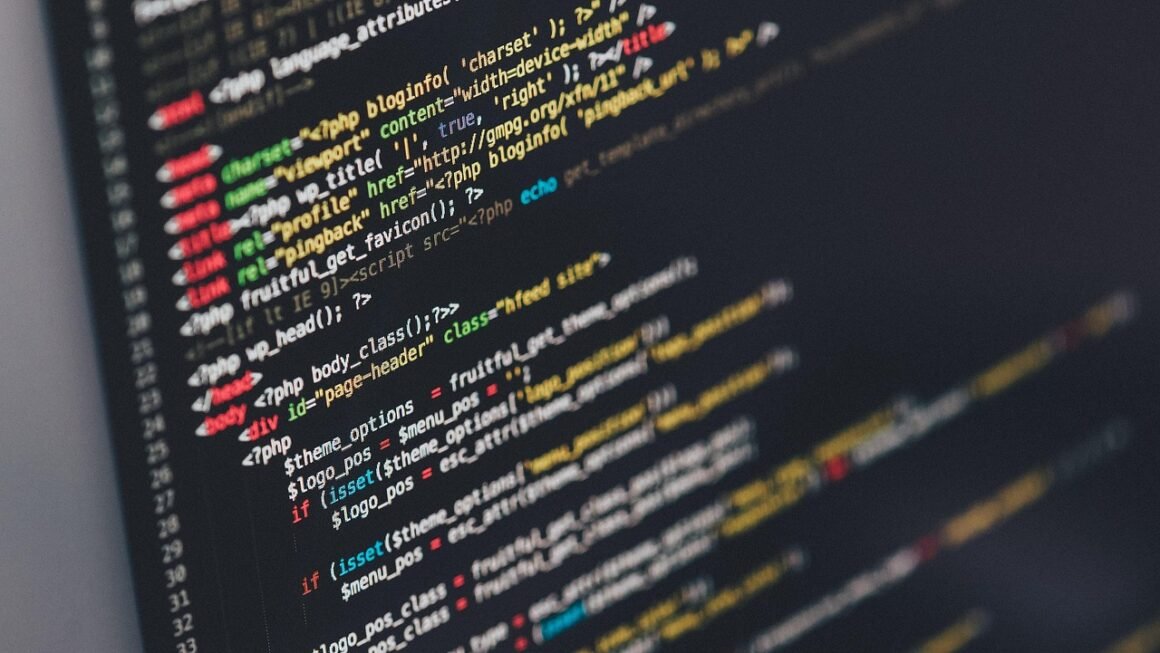Deep learning, a revolutionary subset of machine learning, has propelled advancements across various industries, from self-driving cars to personalized medicine. Its ability to automatically learn hierarchical representations from raw data has unlocked unprecedented possibilities in artificial intelligence. This blog post will delve into the intricacies of deep learning, exploring its core concepts, applications, advantages, and the challenges it presents.
Understanding Deep Learning Fundamentals
Deep learning models, often referred to as artificial neural networks, are inspired by the structure and function of the human brain. These networks consist of interconnected layers of nodes (neurons) that process and transmit information. The “deep” in deep learning refers to the presence of multiple hidden layers between the input and output layers, enabling the model to learn complex patterns and relationships within the data.
The Architecture of Deep Neural Networks
- Input Layer: Receives the initial data, such as images, text, or audio.
- Hidden Layers: Perform complex computations and feature extraction. The more hidden layers, the more complex the patterns the network can learn. This is where the “deep” in deep learning comes from.
- Output Layer: Produces the final result or prediction. The structure of this layer depends on the task at hand. For example, a classification task might have a single node outputting a probability, while a regression task might output a continuous value.
Different types of neural networks exist, each designed for specific tasks:
- Convolutional Neural Networks (CNNs): Excel at image and video processing, using convolutional layers to automatically learn spatial hierarchies of features. Think of them as learning edges, textures, and eventually more complex objects within an image.
Example: Object detection in autonomous vehicles, medical image analysis.
- Recurrent Neural Networks (RNNs): Designed to handle sequential data, like text or time series data, maintaining an internal memory to process inputs in context. They are particularly adept at tasks where the order of information matters.
Example: Natural language processing (NLP), speech recognition.
- Generative Adversarial Networks (GANs): Consist of two neural networks, a generator and a discriminator, that compete against each other to generate realistic synthetic data. The generator tries to create data that looks real, while the discriminator tries to distinguish between real and fake data.
Example: Image synthesis, generating realistic human faces, creating new musical pieces.
- Transformers: Leverage self-attention mechanisms to weigh the importance of different parts of the input sequence, leading to remarkable performance in NLP and other sequence-to-sequence tasks.
Example: Machine translation, text summarization, question answering.
How Deep Learning Models Learn
Deep learning models learn through a process called training, where they are exposed to large datasets and adjust their internal parameters (weights and biases) to minimize the difference between their predictions and the actual values. This process relies on:
- Loss Function: Measures the error between the predicted and actual values.
- Optimization Algorithm: Adjusts the model’s parameters to minimize the loss function. Stochastic Gradient Descent (SGD) and its variants (Adam, RMSprop) are commonly used optimization algorithms.
- Backpropagation: A crucial algorithm that efficiently calculates the gradient of the loss function with respect to the model’s parameters, enabling the optimization algorithm to make effective adjustments.
Training deep learning models requires significant computational resources and large amounts of labeled data. The availability of powerful GPUs and large datasets has been a key driver of the deep learning revolution.
The Power of Feature Engineering and Representation Learning
Traditional machine learning often requires manual feature engineering, where experts hand-craft features from the raw data that are relevant to the task. Deep learning, on the other hand, automates this process through representation learning.
Automated Feature Extraction
- Deep learning models can automatically learn hierarchical representations of data by extracting features at different levels of abstraction. Lower layers might learn basic features like edges or colors, while higher layers combine these features to represent more complex concepts.
- This eliminates the need for manual feature engineering, saving time and effort, and often leading to better performance, especially with complex, high-dimensional data.
Improved Generalization
- The learned representations are often more robust and generalize better to unseen data compared to hand-crafted features. This is because deep learning models can learn features that are invariant to variations in the input data, such as changes in lighting, pose, or background.
- For example, a deep learning model trained to recognize cats can still identify cats even if they are in different poses, lighting conditions, or backgrounds.
Example: Image Recognition
Consider image recognition. With traditional machine learning, an engineer might manually extract features like edge orientations or color histograms. Deep learning models, specifically CNNs, automatically learn these features. The first few layers might learn to detect edges and textures, while subsequent layers combine these features to identify shapes, objects, and ultimately, the entire image.
Applications of Deep Learning Across Industries
Deep learning has revolutionized various industries, enabling breakthroughs in areas previously considered impossible.
Computer Vision
- Image Recognition: Classifying images and identifying objects within them. Applications include facial recognition, object detection in self-driving cars, and medical image analysis.
- Image Segmentation: Dividing an image into different regions, each representing a specific object or area. Used in autonomous vehicles, medical imaging (tumor segmentation), and satellite imagery analysis.
- Image Generation: Creating new images from scratch or modifying existing ones. Applications include creating realistic human faces, generating art, and improving image quality.
Natural Language Processing (NLP)
- Machine Translation: Automatically translating text from one language to another. Deep learning models have significantly improved the accuracy and fluency of machine translation.
- Text Summarization: Generating concise summaries of longer texts. Useful for quickly understanding the main points of documents, articles, and reports.
- Sentiment Analysis: Determining the emotional tone or attitude expressed in a text. Used for analyzing customer reviews, social media posts, and news articles.
- Chatbots and Conversational AI: Building intelligent virtual assistants that can understand and respond to natural language.
Healthcare
- Medical Image Analysis: Assisting doctors in diagnosing diseases from medical images, such as X-rays, CT scans, and MRIs. Deep learning can help detect tumors, identify anomalies, and monitor disease progression.
- Drug Discovery: Accelerating the drug discovery process by identifying potential drug candidates and predicting their effectiveness.
- Personalized Medicine: Tailoring treatments to individual patients based on their genetic makeup and medical history.
Finance
- Fraud Detection: Identifying fraudulent transactions and activities. Deep learning can analyze large datasets of financial transactions to detect patterns that are indicative of fraud.
- Algorithmic Trading: Developing automated trading strategies that can react to market conditions in real-time.
- Risk Management: Assessing and managing financial risks.
Challenges and Limitations of Deep Learning
Despite its remarkable capabilities, deep learning faces several challenges and limitations.
Data Requirements
- Deep learning models typically require vast amounts of labeled data to train effectively. Obtaining and labeling such large datasets can be expensive and time-consuming.
- Data augmentation techniques, such as rotating, cropping, and flipping images, can help to increase the size of the training dataset, but they may not always be sufficient.
Computational Cost
- Training deep learning models can be computationally expensive, requiring powerful GPUs and significant amounts of time.
- The computational cost increases with the complexity of the model and the size of the dataset. Cloud computing platforms offer access to powerful hardware and scalable infrastructure, making it easier to train and deploy deep learning models.
Explainability and Interpretability
- Deep learning models are often considered “black boxes” because it can be difficult to understand how they arrive at their predictions.
- This lack of explainability can be a concern in critical applications, such as healthcare and finance, where it is important to understand the reasoning behind the model’s decisions.
- Research is ongoing to develop techniques for making deep learning models more interpretable, such as visualizing the activations of neurons and identifying the features that are most important for the model’s predictions.
Overfitting
- Deep learning models are prone to overfitting, which means that they learn the training data too well and fail to generalize to unseen data.
- Regularization techniques, such as dropout and weight decay, can help to prevent overfitting.
Adversarial Attacks
- Deep learning models can be vulnerable to adversarial attacks, which are carefully crafted inputs that are designed to fool the model.
- Adversarial attacks can have serious consequences in applications such as autonomous vehicles and security systems.
- Research is ongoing to develop defenses against adversarial attacks, such as adversarial training and input sanitization.
Practical Tips for Getting Started with Deep Learning
Ready to dive into the world of deep learning? Here are some practical tips to get you started:
Choose a Framework
- TensorFlow: A popular and versatile framework developed by Google. Known for its flexibility and scalability.
- PyTorch: A dynamic and research-friendly framework developed by Facebook. Highly regarded for its ease of use and debugging capabilities.
- Keras: A high-level API that runs on top of TensorFlow or other backends. Simplifies the process of building and training deep learning models.
Learn the Basics
- Online Courses: Platforms like Coursera, Udacity, and edX offer excellent courses on deep learning.
- Books: “Deep Learning” by Ian Goodfellow, Yoshua Bengio, and Aaron Courville is a comprehensive textbook.
- Tutorials: TensorFlow and PyTorch provide extensive tutorials on their websites.
Start with Simple Projects
- Image Classification: Classify images from the CIFAR-10 or MNIST datasets.
- Text Classification: Classify text from the IMDB movie review dataset.
- Regression: Predict house prices from the Boston Housing dataset.
Join the Community
- Online Forums: Stack Overflow and Reddit (r/MachineLearning) are great places to ask questions and get help.
- Meetups: Attend local deep learning meetups to network with other practitioners and learn from experts.
- Open Source Projects: Contribute to open-source deep learning projects to gain experience and collaborate with others.
Conclusion
Deep learning represents a significant leap forward in artificial intelligence, enabling machines to learn complex patterns and solve challenging problems. While it presents challenges like data dependency and computational cost, its transformative potential across various industries is undeniable. By understanding the fundamentals, exploring its applications, and addressing its limitations, we can harness the power of deep learning to create innovative solutions and shape the future. This is an evolving field, and continuous learning is crucial to staying at the forefront of advancements. So, embrace the challenge, experiment with different techniques, and contribute to the ever-growing knowledge base of deep learning.



